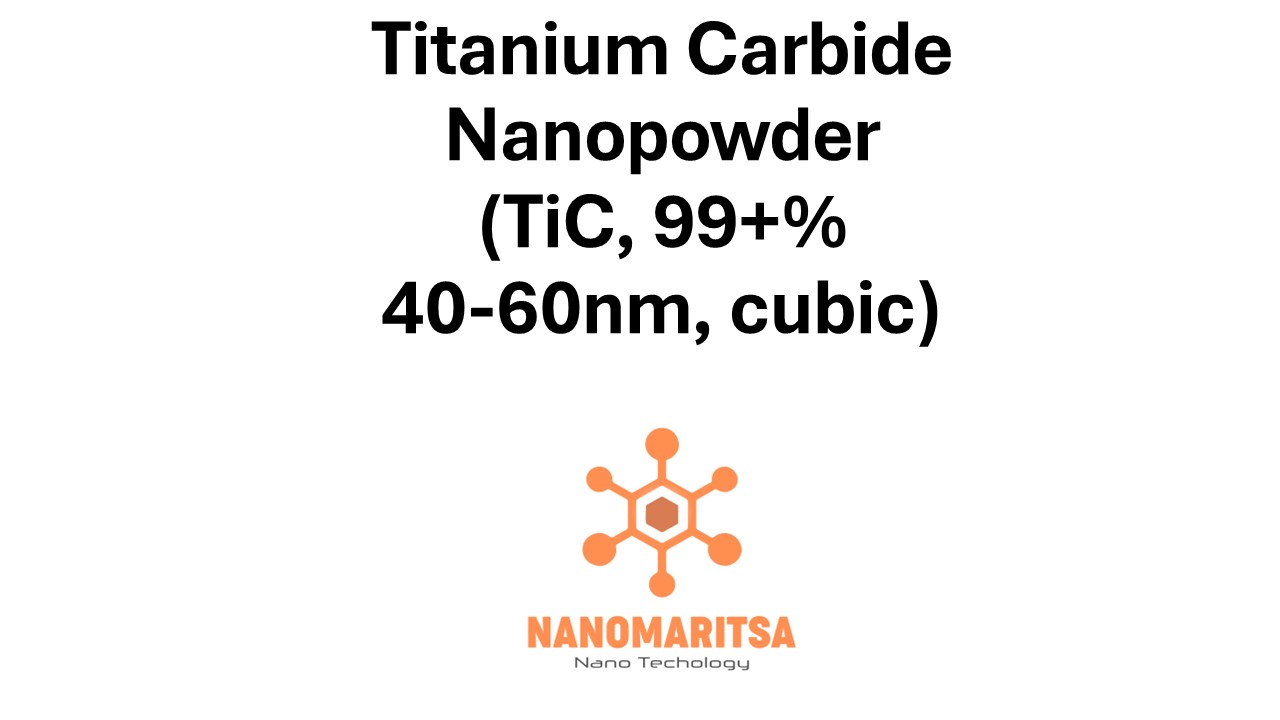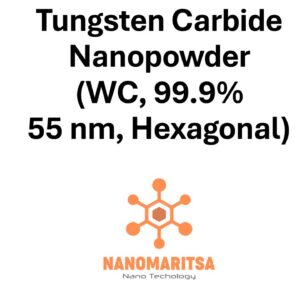Titanium carbide (TiC) nanopowder, with a purity of 99+% and a particle size of 40-60 nanometers, is a cutting-edge material renowned for its extraordinary hardness, high melting point, and excellent electrical conductivity. Featuring a cubic crystal structure, TiC nanopowder is widely utilized in applications requiring exceptional wear resistance, chemical stability, and thermal performance. Its nanoscale dimensions and purity make it a vital component in advanced industries such as aerospace, energy, and electronics.
Composition and Structure
TiC (Titanium Carbide):
Titanium carbide is a ceramic compound of titanium and carbon, forming a dense, highly durable material. Its cubic structure ensures uniform strength and exceptional wear resistance, making it ideal for high-stress and high-temperature applications.
Purity (99+%):
The high purity of 99+% ensures minimal impurities, enabling consistent performance and reliability in sensitive applications. This is critical for advanced manufacturing, aerospace, and electronic technologies where material integrity is essential.
Particle Size (40-60 nm):
The nanoscale particle size enhances surface area, reactivity, and sintering properties, making TiC nanopowder suitable for composites, coatings, and high-performance materials.
Properties
Extreme Hardness and Wear Resistance:
TiC nanopowder is one of the hardest known materials, providing exceptional resistance to wear and abrasion. This makes it ideal for cutting tools, abrasives, and protective coatings.
High Melting Point:
With a melting point of over 3100°C, titanium carbide maintains its structural integrity in extreme temperatures, making it suitable for high-temperature applications in aerospace and industrial systems.
Excellent Electrical Conductivity:
TiC exhibits excellent electrical conductivity, making it valuable for conductive coatings, electrodes, and electronic components.
Thermal Conductivity:
The high thermal conductivity of TiC allows efficient heat transfer, making it an excellent material for thermal management systems and heat exchangers.
Chemical Stability:
TiC is highly resistant to oxidation, corrosion, and chemical degradation, ensuring durability in chemically aggressive environments.
Applications
Advanced Ceramics and Composites:
TiC nanopowder enhances the toughness and thermal stability of ceramic matrix composites, which are used in demanding aerospace, automotive, and defense applications.
Cutting Tools and Abrasives:
The extreme hardness of TiC makes it ideal for cutting tools, grinding wheels, and other abrasive materials. These tools retain their sharpness and performance, improving productivity and reducing maintenance costs.
Thermal Management Systems:
TiC is utilized in heat exchangers and thermal barrier coatings for high-temperature applications, ensuring efficient heat dissipation and system stability.
Energy Storage and Conversion:
TiC nanopowder improves the performance of advanced batteries and supercapacitors by enhancing electrical conductivity and charge-discharge efficiency.
Aerospace Components:
The high melting point and thermal stability of TiC make it a key material in the production of turbine blades, nozzles, and thermal shields for aerospace systems.
Electronics:
TiC’s conductivity and chemical stability enable its use in microelectronics, including resistors, capacitors, and conductive coatings.
Recent Advancements and Research Contributions
University of Cambridge, UK:
Researchers are exploring TiC for high-performance composites and ceramics used in aerospace and energy systems.
Massachusetts Institute of Technology (MIT), USA:
MIT is developing TiC-based materials for energy storage applications, including supercapacitors and advanced batteries.
Tsinghua University, China:
Tsinghua University is focusing on TiC nanopowder for wear-resistant coatings and hybrid materials for industrial applications.
National University of Singapore (NUS):
NUS scientists are investigating TiC nanopowder for its potential in additive manufacturing and 3D printing of advanced thermal and mechanical components.
Recent Developments
- Additive Manufacturing: TiC nanopowder is being integrated into 3D printing processes for producing high-performance, wear-resistant components.
- Hybrid Nanocomposites: Combining TiC with other nanomaterials enhances functionality, expanding its use in aerospace, energy, and industrial applications.
- Eco-Friendly Synthesis: Advances in sustainable production methods are improving the scalability and environmental impact of TiC nanopowder manufacturing.
Future Prospects
Titanium carbide nanopowder (TiC, 99+%, 40-60 nm, Cubic) is a critical material driving advancements in modern technology. As research progresses, TiC nanopowder is expected to:
- Enable innovations in energy storage, including more efficient batteries and supercapacitors.
- Enhance the durability and performance of cutting tools, wear-resistant coatings, and composites.
- Revolutionize aerospace and high-temperature systems with its exceptional thermal and mechanical properties.
TiC nanopowder is a versatile material that exemplifies the potential of nanotechnology in solving complex industrial challenges. Its unique combination of properties makes it an indispensable resource for industries seeking high-performance solutions for the most demanding environments.
| Measurement (gr) | 100 grams, 500 grams, 1000 grams |
|---|






